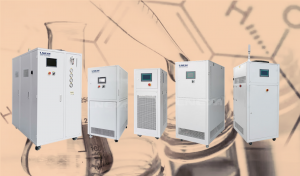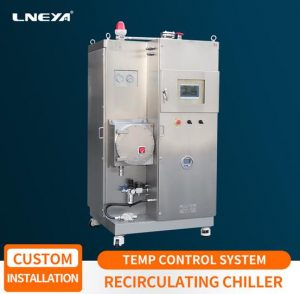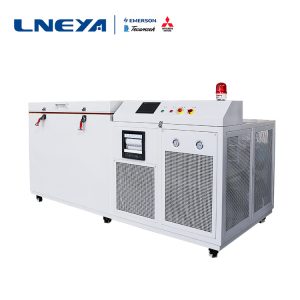Laboratory dedicated chiller pressure description
Le laboratory-specific chiller is one of the more popular equipments in the mechanical equipment industry. For this reason, the relevant pressure instructions have been specially compiled to help you better understand the laboratory-specific chiller.
The reference value of the test chamber-specific chiller and the pressure resistance of the piping system components refers to the design given pressure related to the mechanical strength of the pipeline components. The nominal pressure is generally expressed by PN. Nominal pressure—the compressive strength of the product at the reference temperature, expressed in PN, unit: MPa, reference temperature: different materials, the reference temperature is also different, for example, the steel reference temperature is 250 ° C, the nominal pressure is 1.0 Mpa, Recorded as: PN 1.0 Mpa.
The working pressure of the special chiller in the laboratory refers to the large pressure specified by the high working temperature of the pipeline conveying medium for the operation safety of the pipeline system. The working pressure is generally expressed by Pt.

The design chiller design pressure of the laboratory refers to the large instantaneous pressure of the water supply pipe system acting on the inner wall of the pipe. The sum of the working pressure and the residual water hammer pressure is generally used. The design pressure is generally expressed by Pe. The test pressure refers to the pressure to be achieved by the pipeline, container or equipment under the pressure resistance and air tightness test. The test pressure is generally expressed by Ps.
The nominal chiller pressure of the laboratory is a nominal pressure artificially specified for the convenience of design, manufacture and use. The unit of this nominal pressure is actually the pressure, and the pressure is the common name of Chinese. The unit is “Pa”. Not “N”. The nominal pressure of a pressure vessel refers to the nominal pressure of the pressure vessel flange. The nominal pressure of the pressure vessel flange is generally divided into seven grades, namely 0.25, 0.60, 1.00, 1.60, 2.50, 4.00, 6.40 MPa.
In general, the pressure can be divided into: test pressure > nominal pressure > design pressure > working pressure, so, everyone understands?
Recommandations connexes
-
Disadvantages and advantages of general heat transfer oil heating circulation system
1086The heat conduction oil heating circulation system adopts a fully closed loop structure to directly act on the heat energy to the heated medium. Its advantages are: (1) Due to the continuous renewal of the heat transfer surface, the heat loss is s...
Voir les détails -
État de fonctionnement du dispositif de circulation de contrôle de la température pour l'épuration de la distillation à petite échelle
944Distillation reflux concentration and purification temperature-control circulating device is widely used in many fields. It is very important to select appropriate equipment, which can greatly improve product quality and reduce production costs t...
Voir les détails -
Description des performances d'un refroidisseur à recirculation pour bioréacteur
1039Le refroidisseur à recirculation convient à la réaction à haute et basse température de divers réacteurs en acier inoxydable, en émail, en alliage de titane, d'émulsifiants, de machines de moulage par injection, de cuves de mélange et de divers bioréacteurs. D'autres bioréacteurs en diffé...
Voir les détails -
Instructions relatives aux fuites internes des réfrigérateurs antidéflagrants à ultra-basse température
12921. Sound leak detection method: First, the refrigeration pipeline of the explosion-proof ultra-low temperature refrigerator is filled with nitrogen. Then use a stethoscope to check the interior. When you hear a leak in a certain area, mark it. Car...
Voir les détails
 LNEYA Industrial Chillers Fabricant Fournisseur
LNEYA Industrial Chillers Fabricant Fournisseur














